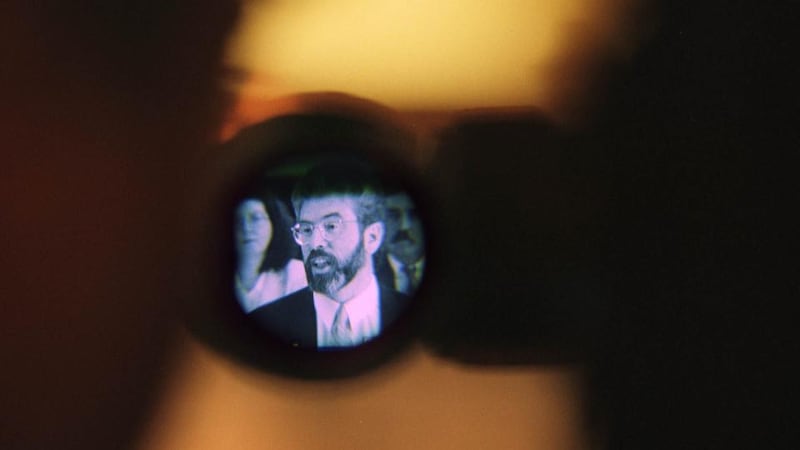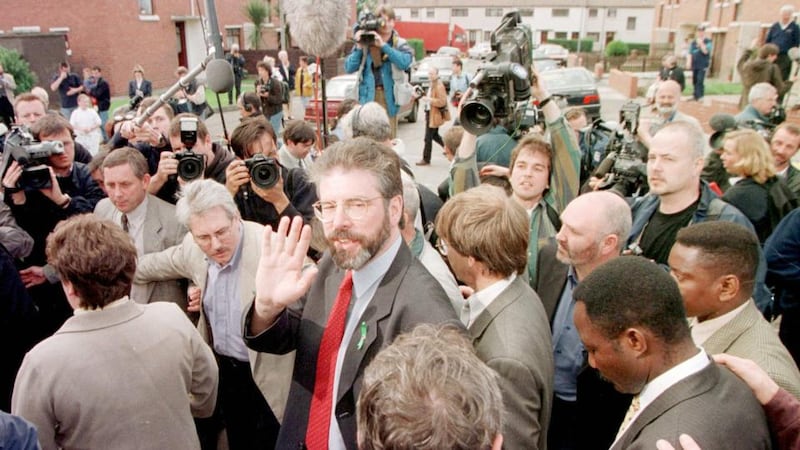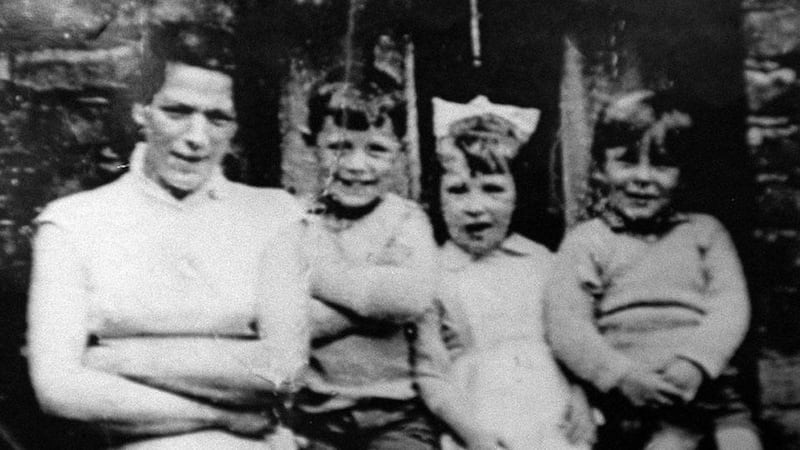He is going away, you know. That was the unequivocal message Gerry Adams delivered to more than 2,500 delegates at the Royal Dublin Society on Saturday night.
His announcement triggered a wave of emotional reaction from the Sinn Féin faithful. All bathed their party’s 69-year-old president with love and affection as he delivered his valedictory.
There are many, some of them victims of IRA violence, who hold an equally strong and opposite view of Adams. But even those who cannot abide the man will hardly deny that he has left his mark on modern Irish history.

Adams will be still several months short of his 70th birthday when he hands over to his successor, in the spring. He has travelled a long way since as a young man he abandoned his job as a barman at the Duke of York pub in Belfast.
His paramilitary and political partnership with Martin McGuinness created a powerful leadership that waged a brutal war, fusing politics and violence, but to the great relief of society finally settled for the ballot box.
Adams and the delegates who left the RDS hall on Saturday night still have to square the risible notion that he was not in the IRA, but it is something that they find easy to reconcile: if Adams feels he must continue to assert this line then they will accept he has his reasons.
Security sources have always insisted that he was a senior Belfast leader during the 1970s and that he was implicated in a series of major and bloody IRA actions.

Armalite and ballot box
But he always came across as more politician than paramilitary, with a keen eye for a propaganda opportunity. He exploited the 1981 hunger strikes in which 10 men died with the election of the hunger striker Bobby Sands, in Fermanagh-South Tyrone. It was an election that propelled Sinn Féin to greater political success, notwithstanding continued claims that the strike was unnecessarily extended so that the party could capitalise on the chances presented. Adams denies any such cynical approach to the strikes. This is a controversy that rumbles on.
Political growth meant not that the IRA abandoned its campaign but that the republican movement adopted a parallel “Armalite and ballot box” strategy, as enunciated by Adams’s friend Danny Morrison.
It led to Adams taking the Belfast West seat at Westminster in 1983, the same year that he and McGuinness and Northern republicans swept aside the old-guard Southern leadership led by Ruairí Ó Brádaigh.
Three years later Adams and McGuinness again were sufficiently confident and powerful to persuade a Sinn Féin ardfheis to end its policy of refusing to take seats in Leinster House.
In 1984 Adams was seriously injured in an Ulster Defence Association assassination attempt. That was a period when it appeared that the Troubles would continue interminably. But in 1988 Adams participated in peace talks with the SDLP leader John Hume.
Although they were unproductive in themselves, they opened the door for a more successful Hume-Adams engagement in the early 1990s, helping to create the conditions for the IRA ceasefire of August 1994.
That ceasefire collapsed, but again Adams carried enough clout to have it reestablished. He also led the party in the negotiations leading to the 1998 Belfast Agreement and onwards to abandoning its No Return to Stormont slogan and entering the Northern Ireland Assembly.
Then the dominant parties were the DUP and the SDLP, but that changed relatively quickly under his and McGuinness’s drive and direction. Now Sinn Féin, with 27 seats, is just one seat shy of the DUP’s 28. It has seven House of Commons seats, which it won’t take, while the SDLP, once lead nationalist party, has none.

Shift south
In 2011 Adams shifted south, leaving Belfast West for a seat in Louth. Again the graph has steadily moved upwards on both sides of the Border for Sinn Féin.
The republican movement tends to be slow and cautious about taking bold steps, but under Adams they happened: the IRA decommissioned, and Sinn Féin signed up to policing and justice in Northern Ireland.
In March 2007 Adams posed at the apex of a table in Stormont with Ian Paisley to indicate that the previously unthinkable would happen: the DUP and Sinn Féin would lead a power-sharing Stormont administration.
That survived until January this year, when the late Martin McGuinness, with the full support if not direction of Adams, walked away over irreconcilable differences with the DUP.

Demons
Adams has had to confront personal and family demons. He disclosed that his father, Gerry snr, physically and sexually abused some members of his family. His brother Liam was imprisoned for sexually abusing his daughter Áine.
His friend turned foe the late Brendan “the Dark” Hughes said Adams ordered the 1972 murder of the Belfast mother of 10 Jean McConville – one of the many unspeakable acts of the Troubles.
It led to his arrest and spending five nights in custody with the PSNI in Antrim, where he was questioned about McConville's murder. Nothing came of that detention and questioning.
Adams also was criticised for allegedly failing Máiría Cahill, who said she was raped as a teenager by an IRA member and subsequently “interrogated” by the IRA to test the accuracy of her claim.
Iconic leader
Gerry Adams led a ruthless but ultimately successful political movement that was always something more than a normal party. Some have described it as a cult. But a cult needs an iconic leadership, and the two figures who met that status in Sinn Féin are now gone or quitting the stage: McGuinness is dead, and Adams is on his way out. His coming departure is a big moment in Irish politics.














